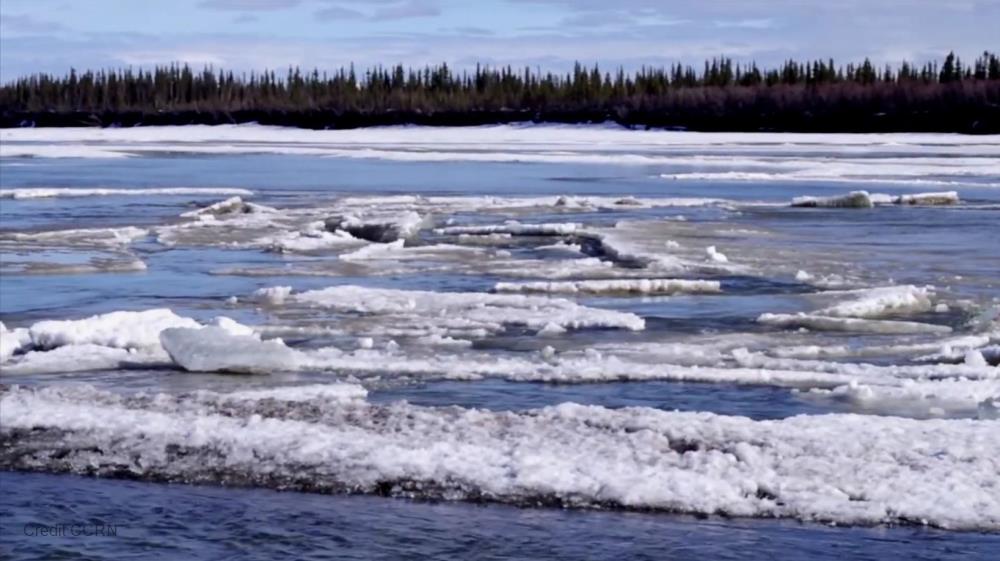
Related items loading ...
Section 1: Publication
Publication Type
Conference Poster
Authorship
Haskell Blake, Dhiyebi Hadi, Servos Mark, Smith Noah
Title
Passive sampling for the detection of SARS-CoV-2 RNA in a university residence wastewater system
Year
2022
Publication Outlet
AOSM2022
DOI
ISBN
ISSN
Citation
Blake Haskell, Hadi Dhiyebi,Mark Servos, Noah Smith (2022). Passive sampling for the detection of SARS-CoV-2 RNA in a university residence wastewater system. Proceedings of the GWF Annual Open Science Meeting, May 16-18, 2022.
Abstract
Wastewater-based epidemiology has emerged at the forefront of the COVID-19 pandemic response as an additional tool for decision makers to employ effective management strategies. The detection of SARS-CoV-2 RNA in wastewater systems is a critical component of pandemic preparedness as routine surveillance has the potential to act as an ‘early warning system’ for outbreaks and is entirely independent of clinical testing limitations. Furthermore, the financial burdens of clinical testing and health care professional shortages felt by governments internationally calls for a rapid and affordable means to evaluate the prevalence of the virus in our communities. This study employs a simple passive sampling approach to detect and quantify SARS-CoV-2 RNA in a university residence wastewater system using medical gauze as a sampling medium. Surveillance was performed at three times per week from August 2021 to April 2022 and monitored over 4,000 students in 10 different on-campus residence buildings. Two N-gene targets were routinely monitored, as well as the fecal indicator Pepper Mild Mottle Virus (PMMoV) for data normalization. While the results demonstrated that the high sensitivity of the method was successful in detecting the presence or absence of SARS-CoV-2 RNA in wastewater, there were limitations to quantification and long-term trend analysis when SARS-CoV-2 levels approached or fell below the limit of quantification. High SARS-CoV-2 RNA loads in wastewater, as best demonstrated in January 2022 during the peak of the Omicron Variant, were most favourable for tracking real differences in the viral signal through time. By engaging multiple stakeholders involved in the on-campus pandemic response, decision-makers were equipped with an additional layer of evidence to support the enforcement or easing of restrictions. The surveillance data was also used to relay the relative risk to students living in affected communities.
Plain Language Summary
Wastewater is a critical component of global water management and is abundantly available as a sampling medium. Detecting and quantifying SARS-CoV-2 RNA in wastewater has proved to be a useful tool for decision makers throughout the COVID-19 pandemic. My research into passive sampling in upstream wastewater systems for SARS-CoV-2 has applications to water management, and will be a key component to pandemic preparedness in the future.
Section 2: Additional Information
Program Affiliations
Project Affiliations
Submitters
|
Blake Haskell | Submitter/Presenter | brbhaske@uwaterloo.ca | University of Waterloo |
Publication Stage
N/A
Theme
Human Dimensions - Impact and Management
Presentation Format
poster plus 2-minute lightning talk
Additional Information
AOSM2022 First Author: Blake Haskell, BSc., University of Waterloo Additional Authors: Hadi Dhiyebi, MSc., Mark Servos, PhD., Noah Smith; University of Waterloo


 GWFNet
GWFNet Master
Master Research
Research Map
Map
 Advanced
Advanced . . .
. . .

 Metadata Editor
Metadata Editor
 Record List
Record List
 Alias List Editor
Alias List Editor
 Legacy sites
Legacy sites